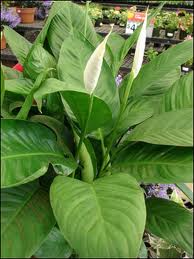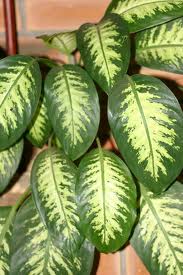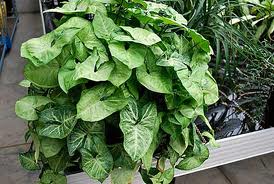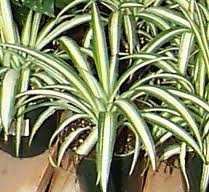ROLE OF PLANTS IN CONTROLLING INDOOR AIR POLLUTION
Environmental pollution is the contamination of the physical and biological components of the atmosphere to such an extent that normal environmental processes are adversely affected.
Air pollution is contamination of environment by addition of chemical substances,noxious gases ,particulate matter etc which disturb its natural physical and chemical composition.
Air pollution comes from both natural and man made sources Such as combustion, construction, mining, agriculture,automobiles,industrilisation and warfare . Common gaseous air pollutants include carbon monoxide, sulfur dioxide, chlorofluorocarbons (CFCs) and nitrogen oxides along with particulate matter or fine dust
Consequences of Air pollution.
Pollution causes not only physical disabilities but also psychological and behavioral disorders in human beings such as headache,bronchitis,asthama,irritation of eyes,cardiovascular problems etc.Animals and plants are also affected by pollution.
The World Health Organization estimates that about two million people die prematurely every year as a result of air pollution, while many more suffer from breathing ailments, heart disease, lung infections and even cancer.Fine particles or microscopic dust from coal or wood fires and unfiltered diesel engines are rated as one of the most lethal forms of air pollution caused by industry, transport, household heating, cooking and coal or oil-fired power stations.
INDOOR AIR POLLUTION
In addition to outdoor air pollution, Indoor air pollution is now viewed seriously by many health organizations as one of the greatest risk to human health as most of the people spend about 90% of the time indoor either in home or office. Polluted indoor air quality imposes both short term
( Irritation of eyes,headache,nausea,allergic reactions,asthama) and long term (chronic bronchitis, heart disease,lung cancer,liver and kidney damage ) effects on health.
Indoor air quality (IAQ) is a term referring to the air quality within and around buildings and structures, especially as it relates to the health and comfort of building occupants.
More than three billion people worldwide continue to depend on solid fuels, including biomass fuels (wood, dung, agricultural residues) and coal, for their energy needs.Cooking and heating with solid fuels on open fires or traditional stoves results in high levels of indoor air pollution. Indoor smoke contains a range of health-damaging pollutants, such as small particles and carbon monoxide.
Indoor Air Pollution is prevalent both at urban and rural levels. Urban Indoor Air pollution can be expierenced in poorly ventilated compact buildings such as Apartments,Auditoriums,theatres,hospitals etc due to human gatherings and modern life style commodities as Air Conditioners,Vacuum cleaners room freshners,sprays,disinfectants, paints,smoking habit etc. Rural Indoor Air Pollution is mainly due to use of traditional stoves using organic fuel(Coal,wood) for cooking which release large amount of smoke and CO which affects respiratory process..
Indoor Air Quality (IAQ) can be affected by microbial contamination ,gases including Radon, CO,CO2,Volatile Organic Compounds as formaldehyde, benzene, trichloroethylene, xylene, toluene, particulate matter, pollen and fungal spores, pesticides etc or any mass or energy stressor that can induce adverse health conditions . Most of indoor pollutants are carcinogenic and neurotoxins.
IAQ can be improved by proper ventilation, use of filters and exhaust fans upto some extent . Using ventilation to dilute contaminants, filtration, and source control are the primary methods for improving indoor air quality in most buildings
Alternative means to tackle Indoor Air Pollution
Some plants which can be grown indoor (shade loving plants ) can be safely exploited as good source of reducing indoor air pollution.
Plants by virtue of their ability to photosynthesize can absorb atmospheric carbon dioxide gas through stomata and release oxygen as a by product so make the air suitable to breathe in by human beings.
Plants give off extra water as water vapour through stomata by physiogical process transpiration thus causing coolness and increase humidity in the surrounding enviroment.so plants are able to the function of air purifier. Plants are more effective at filtering pollutants than air purifiers and filters which consume electricity.
Added bonus when plants are used as purifiers is that they are beautiful and provide natural aesthetic scenario( greenary) which induce calmness and peace to the interior.
Plants are inexpensive, require no electricity to operate.
Studies performed by NASA indicate that houseplants remove indoor air pollutants while increasing the amount of oxygen and humidity in the home. Most houseplants have probably developed from plants that grow in the understory of rainforests and under canopy of huge trees like Banyan,Peeple etc. These plants must be able to survive the high concentrations of mold and mildew and prevent attack to their own leaves. They have adapted by developing microbes on the root system that serves the purpose of biodegrading mold and mildew and are also able to,
effectively biodegrade common indoor pollutants like carbon monoxide, formaldehyde, and benzene, which are by products of cleaning and household products, and provide protection against airborne fungal spores.
Some house plants which can be grown in shade and indoor are useful in controlling IAP by absorbing CO2 and releasing oxygen. Plants also increase humidity and provide aesthetic sense and natural green scenario to home décors. As per NASA reports plants together with medium in which they are grown are able to remove 99.9% toxins from polluted indoor air particularly VOCs . It is not the foliage but associated soil bacteria which develop in rhizosphere of these potted indoor plants are capable of biodegrading toxic chemicals when activated by plant root growth.
There are about 50 plants which can be grown indoor which have probably developed from plants growing in understorey of rainforests and under canopy of huge trees. Names of Some commonly used plants suitable for Indian environmental conditions is mentioned below : Anthurium,Begonia, Asplenium, Dieffenbachia, Dracaena, Rubber plant ,Fittonia,Maranta, Monstera,Syngonium, Alocasia, Philodendron, Pothos, Bamboo palm, Poinsettia,Peace lily, Azalea, Areca palm, Bosten fern, Lady palm,Dwarf date palm etc As plants remove pollutants and make the environment clean , awareness should be created among masses for their cultivation , propagation and appreciation.
To keep the inner environment healthy and free of pollutants it is advisable to put the potted indoor plants in the room or meeting hall ,hospitals, schools at a place where sunlight enters for sometime during day hours one can be in r touch with nature and enjoy the uplifting and rejuvenating effects that house plants bring to any environment by placing the plants in the living rooms
The idea of common plants solving IAQ problems is attractive. Most people like having plants in their homes and offices and in the hotels and public buildings they visit. However, important questions exist as to whether plants can actually affect indoor air sufficiently to warrant their use as air cleaners
Some scientists and interiorscapers (people who design and provide plant environments in buildings) say that National Aeronautics and Space Administration (NASA) research demonstrates the efficacy of plants as indoor air cleaners
It was initially assumed that the plants removed the chemicals by uptake through the leaves and photosynthetic processes But by research measuring the amount of pollutants in presence plants with leaves and after removing leaves indicate that it is actually not the leaves but rhizosphere microflora ( soil bacteria ) of these plants are able to degrade and decompose the pollutants.
The scientists identified several common soil bacteria isolates in the root-soil zone. The researchers said they were "common soil microorganisms" most of which are "known to be capable of biodegrading toxic chemicals when activated by plant root growth
As plants remove pollutants and make the environment clean , awareness should be created among masses for their cultivation , propagation and appreciation






